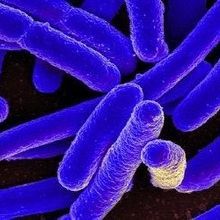digestion

Science Snapshot: No Guts, No Glory
Lisa Winter | Nov 1, 2022 | 1 min read
This image took 3rd place at the 2022 Nikon Small World Photomicrography Competition.

Pufferfish Don’t Need Functional Stomach, Inflate Instead
Natalia Mesa, PhD | Jul 5, 2022 | 5 min read
The fish use their stomach to swell up to three times their size. Is this why they can’t use the organ to digest proteins?

A Connected Community: The Rise of Microbiome Research
The Scientist | Apr 30, 2021 | 1 min read
Explore how microbes shape health, disease, and the world beyond

Sperm Whales Confirmed as the Origin of Jetsam Ambergris
Amy Schleunes | Feb 5, 2020 | 2 min read
Preserved DNA extracted from the rock-like digestive blobs may offer insights into whale ecology.

Metabolism Hits a Ceiling in Athletic Endurance Feats
Shawna Williams | Jun 5, 2019 | 5 min read
In long-distance, physically taxing events, the amount of energy athletes can expend appears to peak at about 2.5 times their metabolic resting rate—a maximum likely dictated by how many calories they can digest.

Productivity Paradox
Jim Daley | Jun 1, 2018 | 2 min read
During the last ice age, there wasn’t much plant matter to eat on northern steppes, but herbivorous woolly mammoths were abundant. How did they survive?

Gut Bugs to Brain: You’re Stuffed
Kerry Grens | Nov 24, 2015 | 1 min read
Bacteria in the intestine produce proteins that stop rodents from eating.

Bile Benefits
Ruth Williams | Nov 1, 2015 | 3 min read
Diverting the bile duct around a long stretch of the small intestine could treat obesity without cutting out chunks of the digestive tract.

How a Popular Probiotic Works
Kerry Grens | Apr 16, 2015 | 1 min read
Eating a type of bacterium encourages the activity of other gut microbes, according to a small study.

Spew, Fly, Don’t Bother Me
Kate Yandell | Oct 3, 2013 | 3 min read
The frequent regurgitation practiced by flies as they ingest and digest food yields densely detailed paintings.
